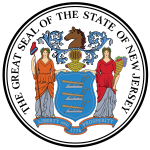This article needs to be updated. The reason given is: unofficial results need to be replaced by the official ones. (November 2021) |
| |||||||||||||||||||||||||||||||||||||
All 80 seats in the New Jersey General Assembly 41 seats needed for a majority | |||||||||||||||||||||||||||||||||||||
|---|---|---|---|---|---|---|---|---|---|---|---|---|---|---|---|---|---|---|---|---|---|---|---|---|---|---|---|---|---|---|---|---|---|---|---|---|---|
| |||||||||||||||||||||||||||||||||||||
 Results: Democratic hold Republican hold Republican gain | |||||||||||||||||||||||||||||||||||||
| |||||||||||||||||||||||||||||||||||||
| Elections in New Jersey |
|---|
 |
The 2019 Elections for New Jersey's General Assembly was held on November 5, 2019. All 80 seats in the Assembly were up for election. The candidates that won in November will be part of the 219th New Jersey Legislature.
All 80 seats of the New Jersey General Assembly were up for election. Democrats held a 54–26 supermajority in the lower house prior to the election. The members of the New Jersey Legislature are chosen from 40 electoral districts. Each district elects one state senator and two State Assembly members. New Jersey uses coterminous legislative districts for both its State Senate and General Assembly.
Going into the 2019 election, every legislative district was represented by two Assembly members of the same party. This was maintained afterward, as Republicans flipped both seats in the 1st district.
